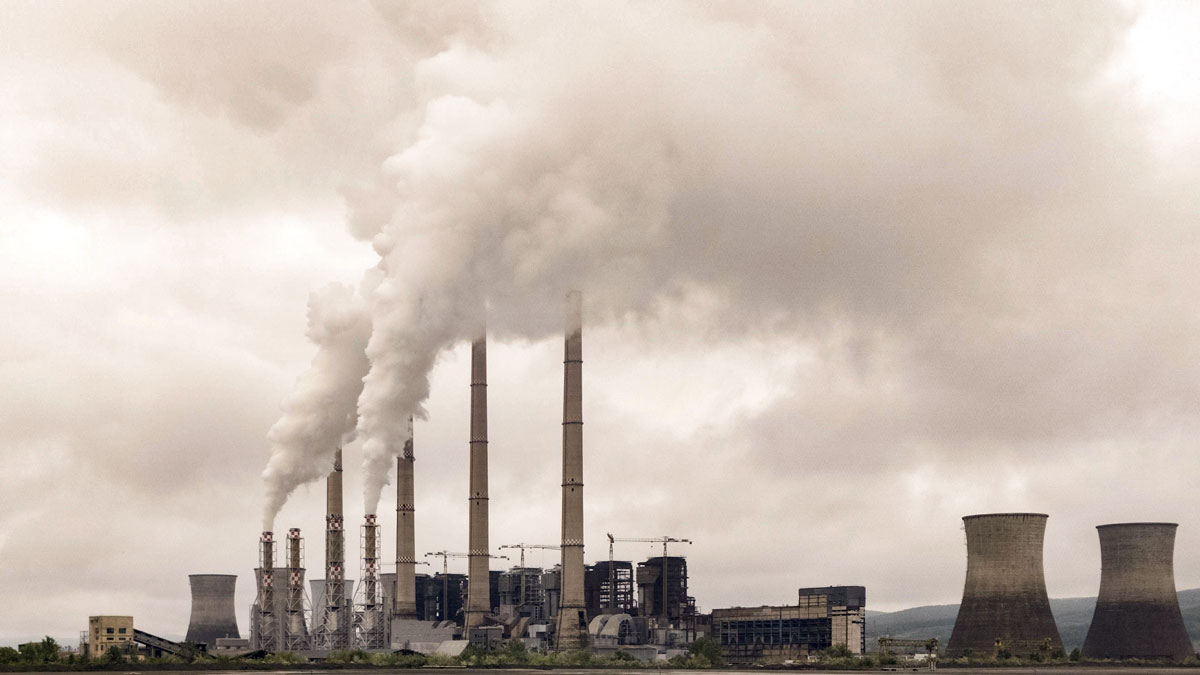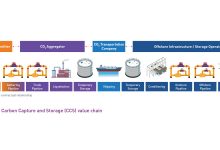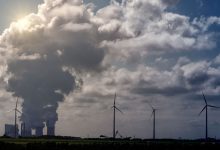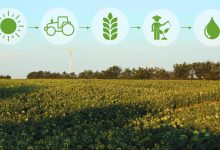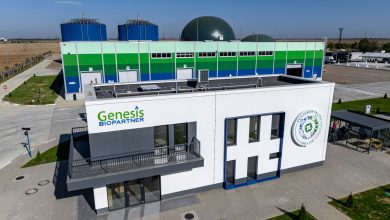Air Quality: EC Calls on Romania to Improve Its Rules on Industrial Emissions
The European Commission (EC) is asking Romania to bring its national legislation into line with the EU Directive on industrial emissions (IED) (Directive 2010/75). Industrial activities have a significant impact on the environment. The Directive on industrial emissions aims to prevent and reduce harmful industrial emissions across the EU while promoting the use of techniques that reduce pollutant emissions and that are energy and resource efficient. The European Green Deal, with its Zero Pollution ambition, puts emphasis on cutting air pollution, which is among the key factors negatively affecting human health. Full implementation of the air quality standards enshrined in EU legislation is key to effectively protect human health and safeguard the natural environment.
The Romanian legal system fails to guarantee the implementation of the key objectives of the directive, in particular that installations must only be allowed to operate if they have permits. On the one hand, the Romanian legal system, in its current state, introduces very low and inadequate penalties, which fail to ensure effectiveness, proportionality and dissuasiveness as required by the Directive. On the other hand, the Romanian authorities fail to implement the existing legislation in a coherent manner on an administrative level (e.g., suspend the operation of installations without permits), while the Romanian judiciary fails to enforce the sanctions, nullifying any effectiveness and dissuasiveness.
Therefore, the Commission is sending a letter of formal notice to Romania, which now has two months to address the shortcomings raised by the Commission. Otherwise, the Commission may decide to send a reasoned opinion.
‘Moderate’ quality air in Romania
At the start of 2021, Romania was experiencing a period of ‘Moderate’ quality air with a US AQI reading of 54. This follows the classification suggested by the World Health Organisation (WHO). The concentrate level of PM2.5 was 13.7 µg/m³. With pollution at this level, it is advisable to close doors and windows to prevent the ingress of dirty air. Those of a sensitive disposition should avoid outdoor activity until the air quality improves. If venturing outside is unavoidable, then a good quality face mask should be worn at all times. What are the main causes of air pollution in Romania?
The main sources of air pollution in Romania can come from any of the following, but generally speaking, the main source in any large city is vehicle emissions followed by industrial emissions.
Private cars are, according to a scientific document that the Bucharest City Hall has had at its disposal since 2014, the main culprits of the polluting emissions in the city. But here we do not only refer to cars, but also to heavy commercial vehicles, buses and other vehicles. Taken together, the latter are more polluting than all cars combined (52.8 per cent of the total compared to 47.2 per cent of cars).
Burning fossil fuels in electricity production, transportation, industry and households, industrial processes and the use of solvents, for example in the chemical and extractive industries are chief contributors. Agriculture, the treatment of waste products and emissions from volcanic eruptions, airborne dust, sea salt dispersal and emissions of volatile organic compounds from plants are examples of natural emission sources.
In order to have a better understanding of the causes of air pollution, we must know that pollutants that enter the atmosphere can be divided into primary pollutants and secondary pollutants. Thus, primary pollutants are the direct result of an industrial process (such as sulphur dioxide emitted by factories) while secondary pollutants are caused by the reactions of primary pollutants, usually as a direct result of ultraviolet light from the sun.
Due to the combustion of fossil fuels (such as coal or oil), sulphur dioxide is one of the main causes of air pollution whilst at the same time, cars with internal combustion engines, are major sources of pollutants with harmful effects on air quality because they collectively release tens of thousands of tons of harmful gases into the atmosphere every day.
Agricultural activities can be a source of air pollution through the production of ammonia. It is a product often used in activities specific to the agricultural sector whilst being one of the most dangerous gases in the atmosphere. Moreover, the widespread use of insecticides and pesticides contributes to the pollution of the environment, including the atmosphere.
Mining is a field in which large equipment is used. During the process, dust and chemicals are released into the air causing large amounts of air pollution. This is one of the reasons why this activity is responsible for the deterioration of the health of workers and residents near mining operations.
Even household activities can cause polluted air with household cleaning products or paint products which emit toxic substances into the air that cause environmental pollution.
What is the government doing about Romania’s air quality?
Several measures are to be introduced by the local authorities in an attempt to reduce air pollution. Powerful washing of streets and pavements with water and/or their subsequent vacuuming (reduces suspended particles by about 70 per cent on the pavement). The planting of hedges and perennial bushes at the edge of boulevards and streets reduces suspended pollutants by 15-60 per cent on the pavement, depending on the pollutant, such as PM2.5, PM10 and carbon dioxide etc.
The prohibition of the use of gasoline-powered leaf blowers and lawnmowers and their replacement with electric blowers together with the prohibition, monitoring and punishment of burning of vegetable waste both in the city and in the surrounding villages will also contribute to cleaner air.
Careful monitoring of landfills, cement production plants, incinerators and the burning of any type of waste, as well as careful monitoring of factories in the city and all sources of gas combustion (including residential blocks), are measures to be introduced as soon as possible. If the construction of incinerators is chosen to replace the current landfills, they should use state-of-the-art technology and not have to bring garbage from other areas.
Construction sites need careful monitoring and infrastructure interventions, as the resulting dust remains in the atmosphere and is full of particularly toxic substances.
Landscaping, planting trees and greenery all year round, is conducive to cleaner city air, especially those which are resistant to shade. They have the ability to retain and filter dust much higher than ordinary trees, in addition, they help biodiversity.
The reduction of concrete spaces dedicated to surface parking is to be implemented and to increase the cost of parking to stimulate the construction of underground car parks replaced by surface parks are two measures to be introduced. The one million cars parked on the ground in Bucharest represent many sources of pollution, regardless of their technical condition.
It is hoped to begin construction of dedicated cycle lanes to cross the city on its axes, on the central and middle ring. These would reduce driving by distances of less than 5 kilometres. Cycling and walking short distances are to be actively encouraged.
Massive investment in electrified public transport and the gradual abandonment of diesel buses is strongly being considered. All new buses should be electric so that in a maximum of ten years there will be no more diesel buses in the city’s car park or on the city’s streets.
Trams are the greenest means of urban public transport, but only if they are modernised and are powered by clean electricity with zero emissions.
The creation of green roofs on schools and other buildings, especially in densely populated areas has been suggested. There are 7 million square meters of terraces in Bucharest, which currently reach over 70C during the summer. The use of a combination of green roof (sedum type plants) and semi-transparent solar panels would increase the green area of the city by more than 30 per cent, with immediate effect on the phenomenon of ‘heat island’ above the city, which raises the temperature and exacerbates pollution.
Planting trees around the city and creating green corridors that cross the city. These axes can be 50-100 metres wide and can include cycle lanes and pedestrian spaces surrounded by greenery, thus becoming a much healthier alternative than the boulevards full of polluted air.
Investment in underground public transport and light surface metro as the main means of transport in the city need to be considered. The subway is the most efficient public transport solution both in terms of pollution and energy consumption.
Another aspect to be considered is the reconfiguration of transit traffic to bypass the city (park & ride, belt, commuter trains, etc.). Here a strategy of the Ministry of Transport is needed because the local authorities do not have the financial capacity to execute such projects on their own.


